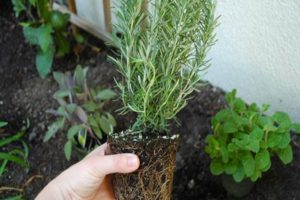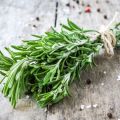How to prepare rosemary for the winter: cover, whether to dig and prune
One of the most ornamental shrubs with a persistent pleasant scent of lavender, sea freshness and eucalyptus is rosemary, everyone wants to have in the garden. But the peculiarity of the plant is its capriciousness in relation to the climate. Without dry, hot summers and wet cool winters, it is difficult for a plant to survive. For inhabitants of a temperate climate, it is necessary to think over how to cover the rosemary for the winter so that it does not freeze and die.
How rosemary winters
For an evergreen dwarf shrub, air temperature and illumination play an important role in the growing season. It is necessary to grow a perennial taking into account the fact that it feels comfortable when:
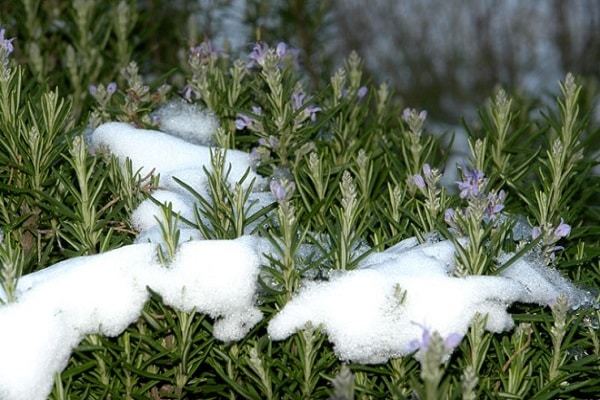
- loose soil without excess moisture;
- slightly alkaline or neutral soil;
- watered regularly, but in moderation;
- the site is well lit and protected from the wind.
But the main condition is the ambient temperature. In some regions, it drops significantly during the winter, which is dangerous for rosemary. Shrubs overwintering in the open ground can freeze slightly if measures are not taken to protect it.
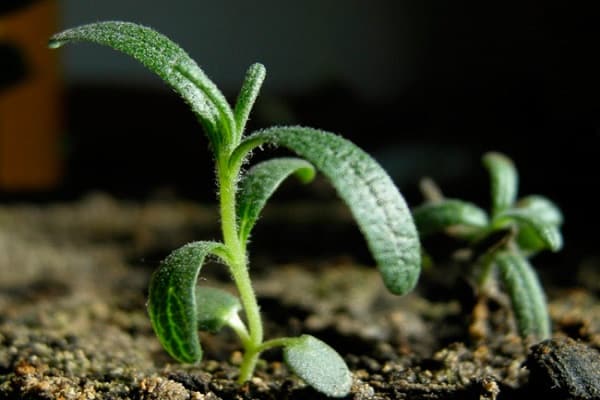
When the plant is young, it can be brought indoors. But as the bush grows, it becomes more difficult to do this. In order for rosemary to successfully overwinter, it is necessary to carry out a number of measures to prepare it for wintering.
Which varieties are easier to winter
Some of the common types of rosemary are considered to be medicinal and common. It is the latter type that serves as a decoration for gardens. They love to plant it as a hedge. Growing, the shrub fills the entire space. It turns out a low, 0.5 meter, fence made of fragrant grass, dotted with small blue flowers.
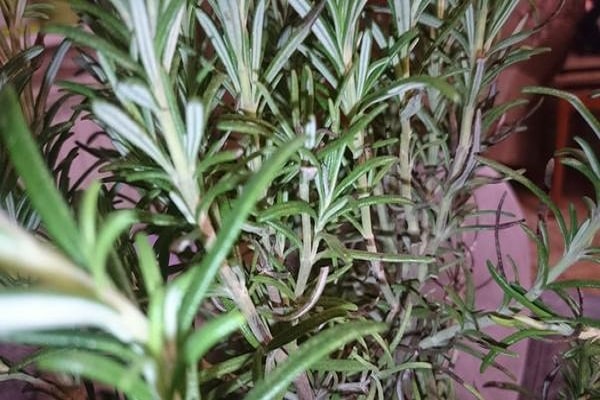
From the widespread varieties, it is better to choose lavender or creeping. Medicinal or ordinary rosemary has other growth characteristics. It is distinguished by erect shoots from 1 meter in height and above, long narrow leaves. The bush is covered with flowers, lilac, purple, white, in early spring. For medicinal purposes, the leaves and tops of the shoots are used, using them as an infusion.
The essential oil obtained from perennials is beneficial for the elderly and frail people.
Among the varieties of ordinary rosemary, Rosinka, Tenderness are suitable for a temperate climate. It is better to plant them in pre-prepared soil, loose, nutritious or seeds, or cuttings. In order not to dig out the bushes every time for the winter, they are planted in a pot or tub and brought into the room before the air temperature starts to drop.

Preparing rosemary for wintering
The onset of cold weather, freezing of the soil - this is the obstacle that can destroy an ornamental bush.
In order for rosemary to withstand adverse living conditions, it must be prepared for them, starting in spring:
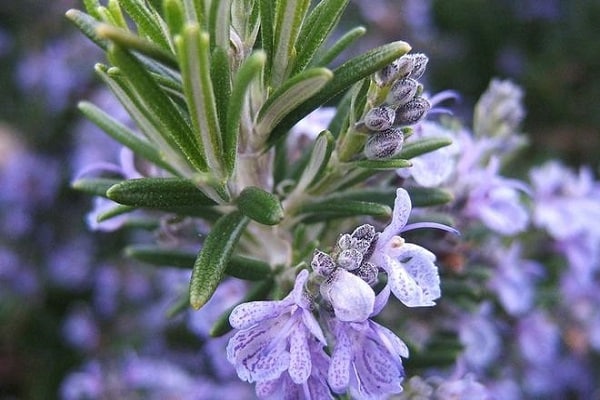
- For a plant, the close occurrence of groundwater is dangerous. An evergreen perennial will save a good drainage, which will not allow the roots of the bush to weaken, rot.
- When flowering shoots have been growing for more than one year on the site, they must be fed 1-2 times during the growing season. For this, up to 2 kilograms of humus or compost are applied per square meter. After feeding, the soil is loosened to a depth of 5-10 centimeters.
- Mineral fertilizers also allow rosemary to grow stronger before wintering. The complexes must contain potassium, nitrogen and phosphorus. These elements will strengthen the plant's immunity, allowing it to endure the cold period.
- Pruning the bush during the active period of life will reduce the load on the plant, and rejuvenate the crown. There is a place for cut twigs in the kitchen. They are added to various dishes and drinks.
- When the shrub is still young, and they promise a harsh winter, it is better to transplant the shoots into a pot and bring them indoors. The plant is well preserved at a temperature of 10 degrees Celsius.
Strong ornamental shrubs with a robust immune system can survive winter and sprout in spring.
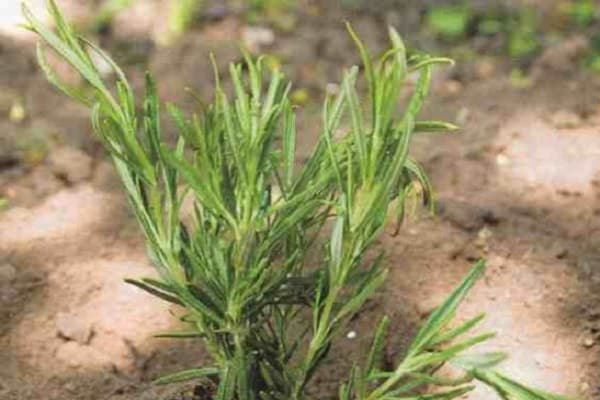
Do I need to prune rosemary for the winter
Pruning rosemary is obligatory, because thanks to it the shrub takes on a noble form. In addition, you must cut off those branches that are withered or damaged.
It is better to prune shoots during the period of active growth of the perennial. This time falls in March-April. And the twigs trimmed in spring can be used as seasoning or medicine.
Before preparing the bush for wintering, you should not prune the rosemary. After all, the plant will need strength to endure a difficult period of life. Pruning will only weaken the plant, it will not be able to recover from the removal of shoots. The risk of death of a bush treated with a pruner before wintering will increase several times.
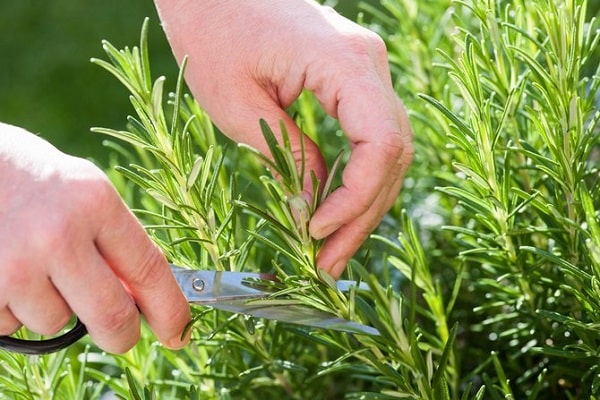
Dig up or cover: which method is better
Delicate decorative culture does not tolerate even a slight drop in temperature. Therefore, in the fall, the gardener must determine what to do, how to reliably protect the rosemary from the coming cold weather. And they do this not when the temperature has already dropped below 0 degrees.
In regions with warm and humid winters, rosemary bushes can be sheltered. For this, dry foliage, straw, sawdust are suitable. Before sheltering, the bush is bent to the ground. If there are few shoots, then they are pinned with wooden pins. You can limit the growth area to boards or shields. Dry natural material is poured into them and covered with a film on top. Such a shelter will save the plant from the effects of low temperatures.

If the rosemary bush is young and has not grown much, it can be transplanted into a pot in a cool, bright room. The perennial will perfectly survive the dormant period, and in the spring it will be ready to bloom in the garden.
But not all bushes can be dug up. If the bush has grown enough, then it is better to cover it with improvised means. But in areas with a cold climate, this method will not save rosemary from freezing. Therefore, the best option would be to grow in a container. Then in the spring they transfer the pot with the evergreen crop to the fresh air in the garden, and in the fall they bring it into the basement.
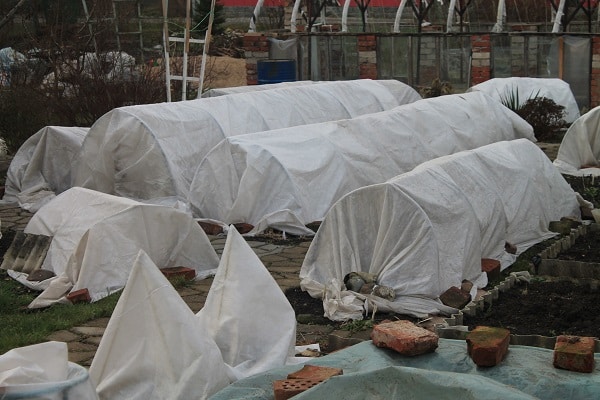
Where can you transplant rosemary for the winter
The semi-shrub ornamental culture grows well in the open field, increasing in size every year. Rosemary shoots can reach a height of about a meter or more. In this case, the number of leaves increases, and the shoots begin to lignify. In this case, it is difficult to transplant the plant to another location.
But when it is known that frosts will be within minus 10 degrees, the bush will die in any case, and no shelter will save it. It is urgent to prepare a warm room with optimal illumination. A container with a bush is transferred there and left for the winter.
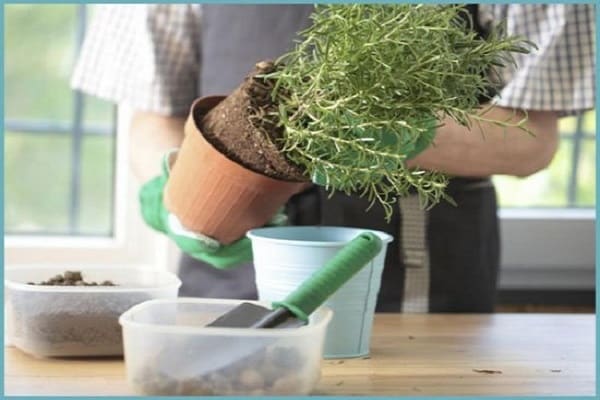
Shoots dug out of the ground can be planted in a prepared container with nutritious and loose soil. Do not forget about the acidity of the soil. It is better to lime the ground so that the rosemary successfully overwinters.
After transplanting, the plant must be allowed to grow stronger by regularly watering it. You should not keep a garden plant in the room. The ideal option for him would be the conditions of a balcony, loggia or veranda. There will be plenty of light, and the air temperature will not drop below 5 degrees Celsius. Here fragrant shoots will survive the winter, gain strength for the subsequent growing season.

Winter rosemary care
Easy to care for medicinal perennial at home. Care activities include the implementation of:
- watering to prevent the soil from drying out in the pot;
- one-time feeding with organic or mineral fertilizers;
- air temperature control not higher than 8-10 degrees Celsius and humidity at the level of 75 percent;
- fresh air supply with draft protection.
Those rosemary bushes that remain in the garden or in the country should also be monitored in order to preserve the valuable culture.
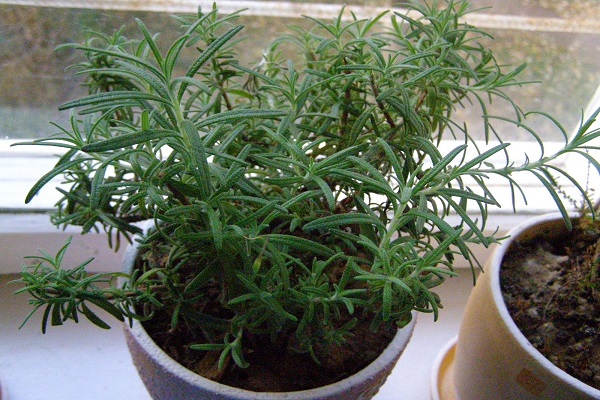
In the garden
To protect the rosemary grown in the garden, it must be carefully prepared for wintering. In addition to a reliable shelter, the bush needs loose soil to have enough moisture and air for the long winter. The soil must have enough nutrients to help the plant through a difficult time.
With good shelter, it is necessary on warm days of winter to check the condition of the bush, to ventilate the plantings. The influx of fresh cool air will give the plant strength, save it from decay and fungal infections.
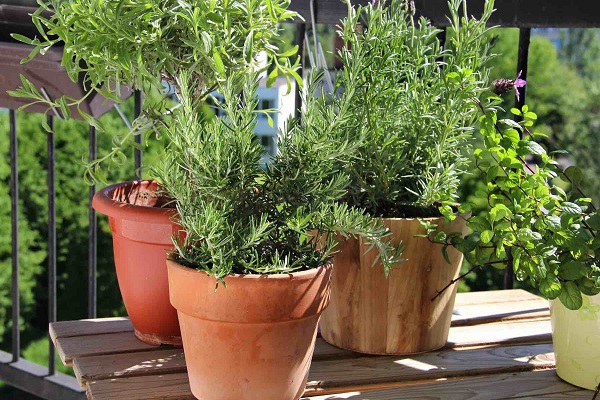
In the open field
Anyone who leaves a rosemary bush in the ground for the winter must provide warmth. In addition to shelter with straw, spruce branches, dry leaves, you need to hide the plantings under the snow. Therefore, before planting a heat-loving culture, it is necessary to choose a site for the plant where more snow accumulates, it is not blown out by the winds. The snowdrift stays warm throughout the winter, which helps to avoid death of rosemary.

In the country
Summer residents, before growing thermophilic rosemary on the site, need to know the rules for caring for it, the conditions for its maintenance in the cold season. It is advisable to plant the plant in a pot in order to place it in the basement or on the veranda in October, providing enough light. Given the short daylight hours in winter, you need to install fluorescent lamps in the room. By hanging them at the level of 30-40 centimeters from rosemary, they provide an opportunity for the plant to prepare for the growing season, flowering.
It is necessary to water the bush rarely, coming to the country 2-3 times a month. Rosemary hardly needs any fertilizing. If the care was correct during the active season, then the plant will have enough food for the entire winter.
You can leave a perennial in the ground for the winter if the dacha is located in an area with a temperate climate... Then a shelter made of natural materials will allow the ornamental shrub to calmly survive the cold and frost.


